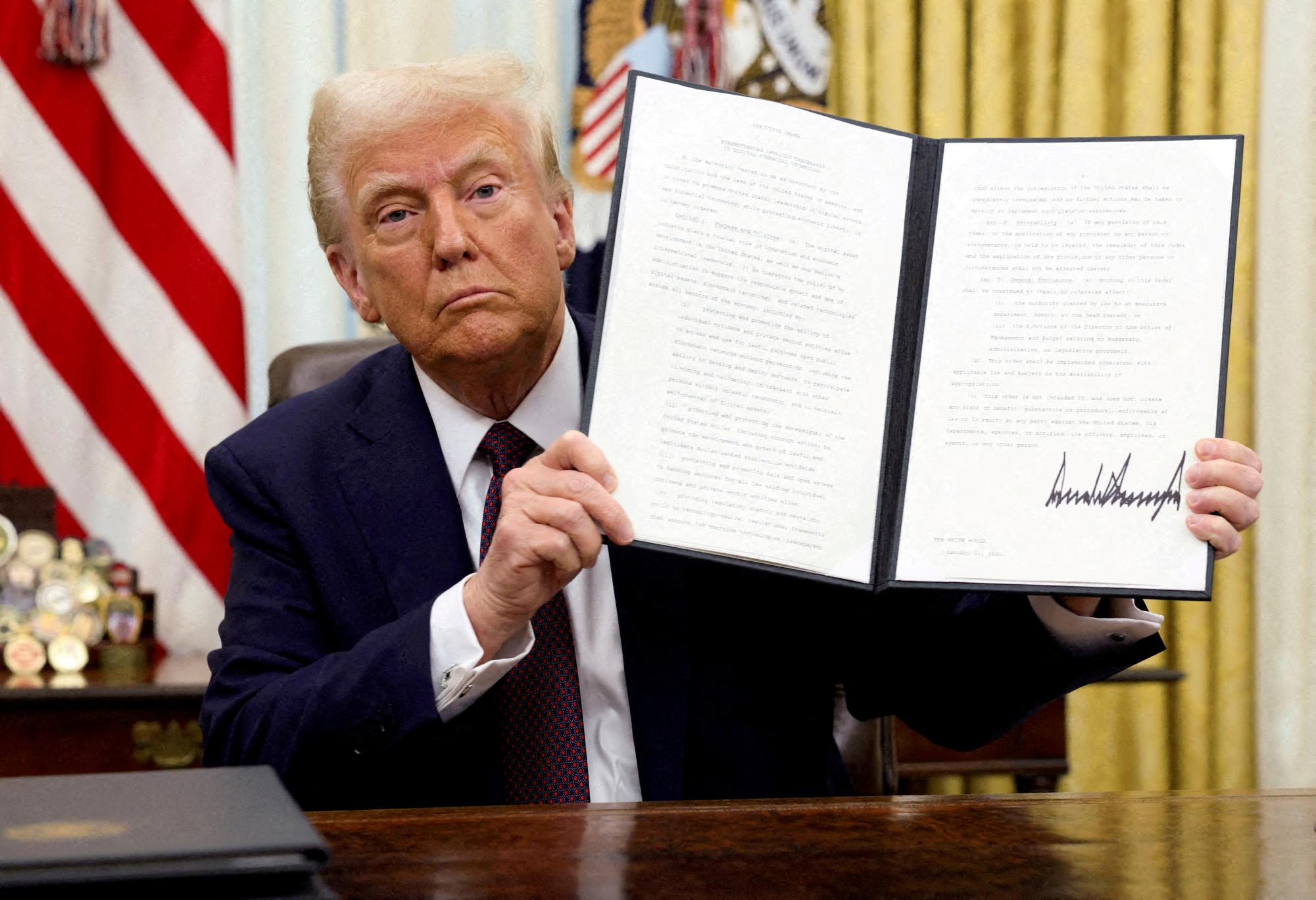Since President Donald Trump’s inauguration on Jan. 20., swift changes have been made to American policies and government. President Trump has signed 143 Executive orders as of May 5, quadruple the number of orders he signed in his first full year of presidency in 2017, according to the Federal Register.
An executive order is “a written directive, signed by the president, that orders the government to take specific actions to ensure ‘the laws be faithfully executed,’” according to the American Civil Liberties Union.
Executive orders do not countermand federal laws and statutes, nor allow the president to create new laws. This means that presidents cannot generate executive orders to overpower the legislative or judicial branches.
Historically, most executive orders center around “routine administrative matters and the internal operations of federal agencies” according to the Bureau of Justice Assistance.
Despite most executive orders being used to issue mundane orders like national holidays or government affairs, there have been instances of presidents issuing key executive orders like The Emancipation Proclamation by President Abraham Lincoln, which stated enslaved persons in the Confederacy were free, or the Internment of Japanese-Americans in 1942 by President Franklin D. Roosevelt during World War II, according to History.
According to USA Facts, an average of around 49 executive orders have been made per year by the last 10 presidents.
“We have a president [Barack Obama] that can’t get anything done so he just keeps signing executive orders all over the place,” President Trump said in a Morning Joe interview in 2016, criticizing Obama’s choice to use Executive orders.
Since his inauguration, President Trump has signed 143 executive orders as of May 5, ranging from topics dealing with government affairs, border issues, the U.S. economy, tariffs and many others.
President Trump’s second executive order, Executive Order 14148, rescinded 78 previous executive orders that dealt with “diversity, equity and inclusion” or DEI programs.
According to President Trump, DEIs have replaced “hard work, merit and equality with a divisive and dangerous preferential hierarchy. Orders to open the borders have endangered the American people and dissolved Federal, State and local resources that should be used to benefit the American people,”
The executive orders rescinded were COVID-19 responses, racial and orientational protections in schools, governments and workplaces, environmental protections such as climate change support and healthcare advancements.
Within the 143 executive orders by President Trump, there have been multiple executive orders addressing the cutbacks and development of government services and agencies. One of President Trump’s implementations of government agencies was the Department of Government Efficiencies, also known as DOGE.
Executive Order 14158 implemented DOGE, which has a goal of “modernizing Federal technology and software to maximize governmental efficiency and productivity,” DOGE is President Trump’s attempt to cut federal spending and the government workforce and increase efficiency in the government.
According to the DOGE X account as of March 31, Social Security has claimed that they have cleaned up their social security number holder data and listed more than 9.9 million individuals over 120 years old as deceased. DOGE claims that the millions of dead Americans are receiving social security payments and the updates have significantly lowered government spending.
There are no definite numbers on how many individuals have been laid off from government positions since the establishment of DOGE, however, almost every single government department has faced shrinkages, including the Centers for Disease Control and Prevention (CDC), which works to protect Americans against diseases and security threats.
“On Feb. 14, officials with the Centers for Disease Control and Prevention were told they were losing nearly 1,300 probationary employees — about one-tenth of the agency’s workforce — but the final number was closer to 700, according to two CDC officials who spoke on condition of anonymity because they were not authorized to discuss the cuts” according to AP News.
Immigrants have also been targeted in the pursuit of lowering government spending and ending DEI programs. One of President Trump’s most controversial Executive orders was “EO 14160: Protecting the Meaning and Value of American Citizenships.” The order states that the United States government shall not issue documents recognizing U.S. citizenship or accept documents if the individual’s parent(s) were unlawfully present or not permanent residents in the United States. This executive order ended birthright citizenship, which allowed all individuals born on U.S. soil, despite their parents’ legal status, to become U.S. citizens.
According to the American Immigration Council, “The 1898 Supreme Court case of United States v. Wong Kim Ark established an important precedent in its interpretation of the Citizenship Clause of the Fourteenth Amendment in that it cemented birthright citizenship for children of all immigrants.”
However, not all of President Trump’s executive orders have centered around the government or human rights. Quite a few executive orders have concerned the environment, or more specifically, energy sources in the United States.
President Trump’s attempt at cutting off foreign natural resources includes domesticizing or “Americanizing” energy sources. The International Energy Agency has reported that the United States’ crude oil production has gone up 129% and 98% in natural gas production between 2000 to 2023.
However, despite these statistics, “Petroleum imports from Canada have increased significantly since the 1990s and Canada is now the largest single source of U.S. total petroleum and crude oil imports. In 2022, Canada was the source of 52% of U.S. gross total petroleum imports and 60% of gross crude oil imports,” according to the U.S. Energy Information Administration.

In response to these statistics, President Trump has made several executive orders. One being Executive Order 14154, which aims to “unleash America’s affordable and reliable energy and natural resources.”
This executive order will encourage energy production on federal lands, create an abundant supply of energy and eliminate electric vehicle mandates. President Trump has also created the Energy Dominance Council to further his goals of domesticizing energy production.
According to the website for the White House, “Under President Trump’s leadership, American families saved an average of $2,500 per year in utility and gas costs, while the economy at large saw the creation of new American energy jobs.”
Within the first 100 days of Trump’s presidency his promise to save American families money through ending inflation has worked but isn’t expected to last.
“The annual inflation rate dropped to 2.4% in March, hitting a six-month low. But economists warn that relief could be short-lived, as fallout from Trump’s trade war is expected to drive prices up in the coming months,” according to NPR.
Despite all of President Trump’s attempts to lower inflation and prices for Americans, more American people disapprove of his handing the economy than approve.
“More Americans say that, compared with the Biden administration, the Trump administration’s policies have made the U.S. economy weaker (49%) rather than stronger (37%). Another 13% say there is not much difference,” according to the Pew Research Center.



